The land crossing from Laos into China gave me a bit of a sphincter workout. Â The border official saw that I had repeatedly gone in and out of China in the last few years and asked me a bunch of questions. Â First, he just wanted to get to know me. Â He even asked me who my father is, and what does he do. Â Then he called his boss, who immediately started bragging about their new learning computers, with neural net processors, designed to sniff out miscreants like me. Â In an unexpectedly friendly turn, he offered me a box of donuts. Â As I reached for one, his stern expression returned. Â If I wasn’t being completely honest, he threatened, I’d better leave enough room for his fist, because he was looking forward to ramming into my stomach. Â I felt like puking all over his pig face at that point, but as a show of good faith, I stuffed the whole donut in my mouth and wolfed it down, doing my best to smile brightly the whole time.
For what seemed like hours, I sat there waiting with my ass clenched so tight you couldn’t squeeze a greased bb up there. Â Finally, he came back with a grin and handed me my passport. Â As I stood up, finally relaxing my butt cheeks and inadvertently expelling a huge air biscuit, Â he gave me a hearty smack between my shoulder blades. Â “Welcome to China, Mr. ___.”
By the time I got through, the bus had left and I had to hire a motorcycle to catch up to it. Â Fortunately, everything worked out and I arrived safely in Mengla, a town in southern Yunnan province.
A few kilometers from downtown Mengla is a well-designed little nature reserve and park called Skytree, or 望天樹.  It features a protected area of primary rainforest which is home to the endangered Parashorea chinensis Wang Hsie, a tropical tree endemic to this region.
After spending the past month in Laos, for the first time in a long time I really appreciated the strengths of China. Â More often than not, conditions in China, especially in terms of environmental protection and awareness, contribute significantly to my general dissatisfaction with existence, but, even more depressingly, China is way ahead of Laos.
In China, scientists and intellectuals are often oppressed, neglected, and unfairly treated, but in Laos, they barely even exist. Â In places like southern Yunnan, it’s clear that environmental awareness is on the rise and there are people working to strengthen environmental protection. Â At present, the results are far from ideal, but at least the efforts are visible.
In Laos, even basic awareness is virtually undetectable. Â Education is just not accessible. Â Then again, maybe I’m being unfair. Â I’ve spent much more time in China than in Laos, and I can’t speak the local languages in Laos, so I’m sure I missed a lot of important information. Â In short, it was an odd feeling, but I was surprisingly relieved to be back in China, where a small but tangible group of people are banging their heads against a brick wall working to protect the environment.
Skytrees is definitely worth a visit. Â I was the ONLY guest in their nicely built hotel that could’ve accommodated at least a couple hundred tourists. Â The main attraction is the world’s tallest rainforest canopy walk, as high as 36 meters (118 feet) above the ground.
I also want to note that, despite my making fun of their English signage, the park’s signs and labels were some of the most informative and well-written I’ve seen in China. Â Hundreds of trees and plants are marked, and the most interesting ones have well-translated descriptions. Â This is an excellent park for science nerds and wannabe botanists.
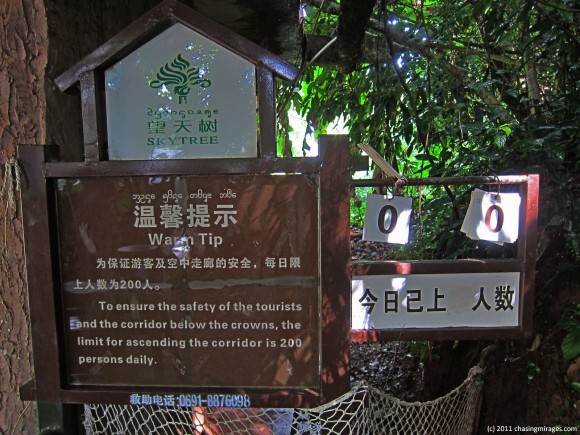
I was the first person to visit that day. Two unfortunate points - first, judging by the number of other visitors I saw, I don't think they often see more than 200 visitors a day. Second, they don't actually use this sign to keep track of the number of visitors, so when it gets busy, I'm sure they admit more than the "sustainable maximum". Â Yet another example of 'nice idea, poor execution' in China.
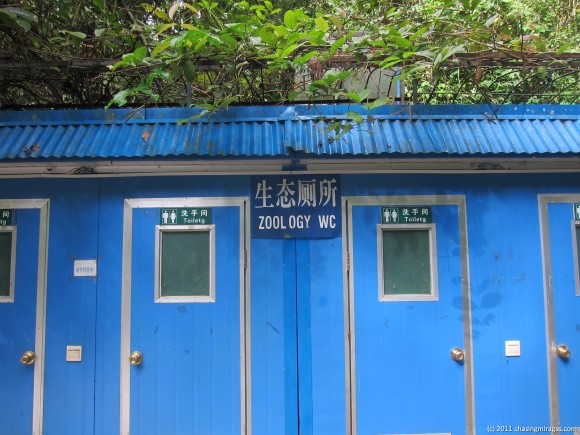
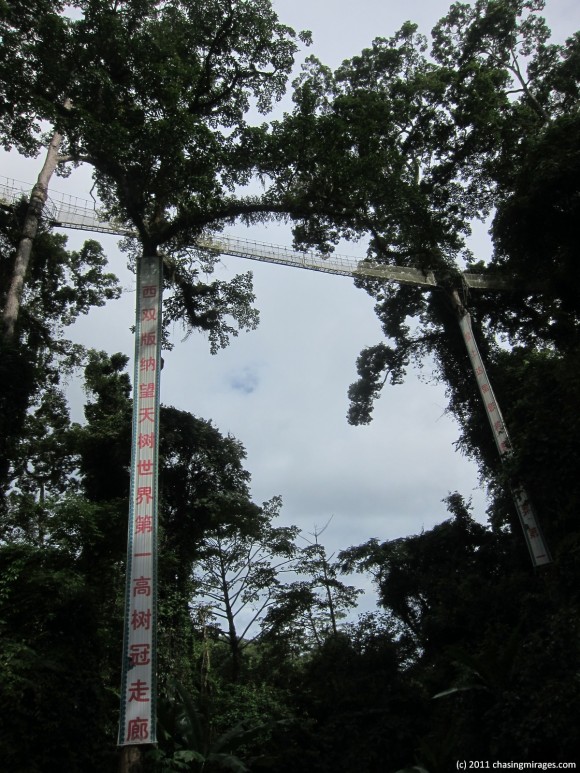
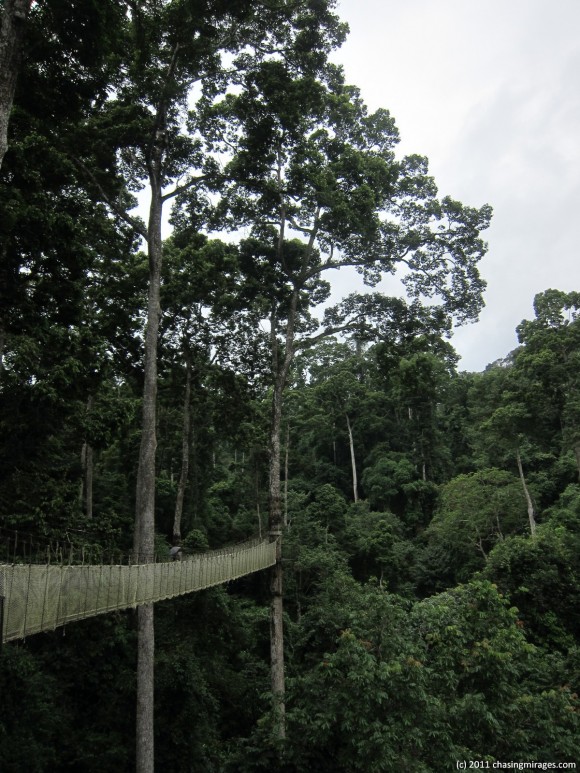
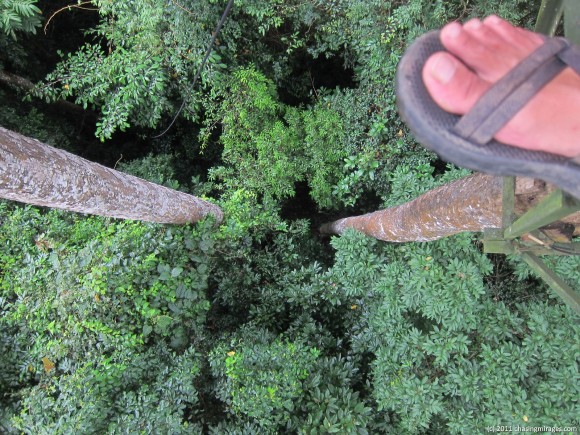
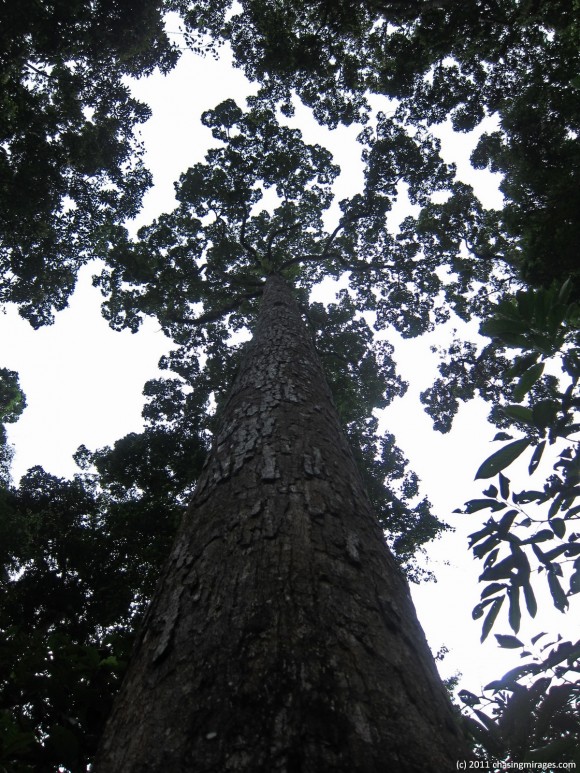

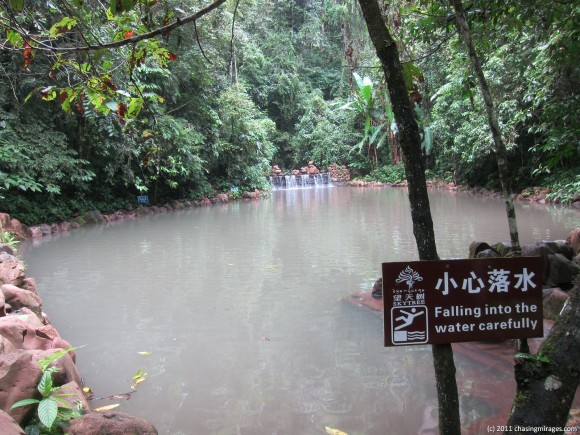
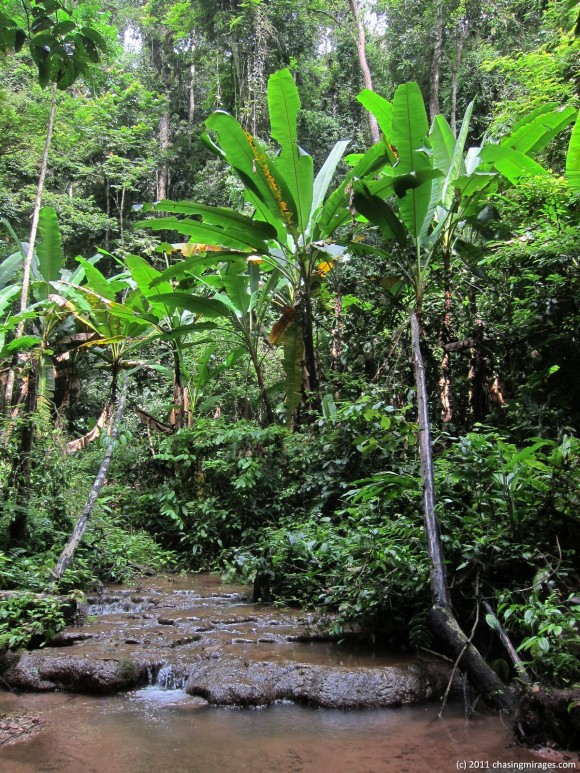
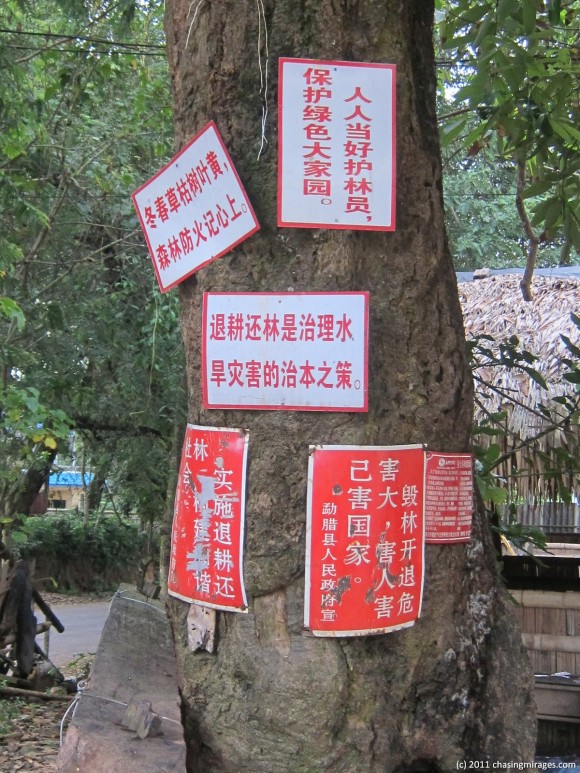
July 28, 2013 at 07:53
What is the so-called big city nearby. Pictures look very good.
September 24, 2013 at 20:43
The biggest city nearby is called Jinghong.
October 30, 2012 at 07:54
This place looks amazing! I’m having a hard time just gathering up the courage to imagine walking across that bridge!
October 30, 2012 at 20:06
Haha, it’s really not so bad.. But I do recommend wearing a diaper.
July 9, 2012 at 07:33
Great story and beautiful photos. I’d love to visit there if I’m ever back in Yunnan.
Did you talk to any officials at the canopy site about their conservation efforts? What they are currently required to do, what actually happens, what goals they have going forward? Do those sorts of conversations oriented towards improvement happen in China or are they foreign to them?
July 17, 2012 at 13:44
Unfortunately, I didn’t have the chance to talk to any officials at the Skytrees park. I walked around and spoke to some locals, and my feeling was that they simply reacted to edicts and subsidies from above rather than having any kind of personal interest in conservation. As for the preservation of this patch of forest, like most things in China, it’s seen first and foremost as an economic opportunity, which in this case happens to coincide with conservation. To the great majority of officials and citizens in China, “improvement” still means “economic improvement”.
February 20, 2012 at 06:49
“good idea, poor execution” certainly was a theme. as well as “absurd idea, elaborate execution” – china is a very special place. looks like you found a well hidden gem.